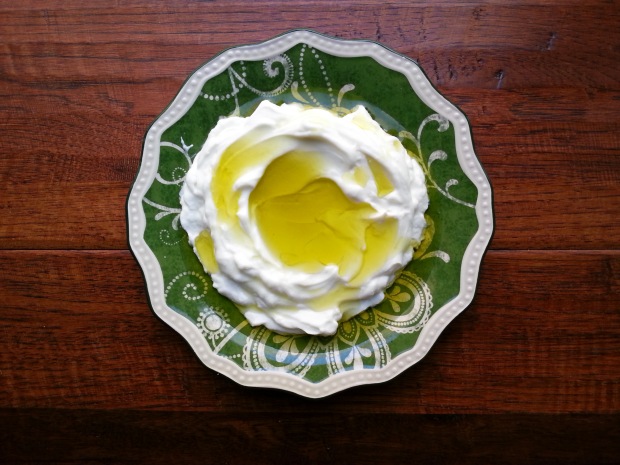Labaneh
Introducing the return of dairy to Free Kitchen! I have been experimenting with dairy for the past few years, and discovered that I can eat goat and sheep dairy, as well as butter from cows, with no discernible ill effects, but cannot eat any other cow dairy. Read the full story here.
Labaneh, or labneh or labnah, depending on your dialect, is strained yogurt that has the texture of a very thick sour cream. It’s a staple in the Arab kitchen, usually drenched in extra virgin olive oil and scooped up with pieces of bread. Make sure your bread is gluten-free, of course!
There is commercially made labaneh available at Arab groceries. However, I’ve noticed that in recent years, some brands have added unnecessary ingredients, such as modified corn starch. Furthermore, the labaneh available in the U.S. market is made of cow’s milk, which I can’t eat. So I made some myself, out of goat milk yogurt, which is one of the traditional yogurts of the Middle East and thus more authentic. And you can make it very easily as well!
Get yourself some plain yogurt. Take a piece of cheese cloth and drape it over a small colander that fits over a bowl. Refrigerate 12 to 24 hours while you let the yogurt drain. As most of the water drips from the yogurt, you’re left with the thickened labaneh. Here’s a photo from Free Kitchen’s Instagram account of what the set-up looks like. (Don’t forget to follow Free Kitchen on Instagram!)
One of the nice things about labaneh is that you can eat it plain, or paired or topped with other ingredients. Labaneh is amazing with olives, especially kalamata. You could also mix in a Middle Eastern hot pepper paste for a spicy labaneh. I ate mine with this:
Palestinian za’tar, which happily came into my possession during a visit to Toronto this summer. (I’m saving this za’tar for special dishes.) You can order it here. You may remember za’tar from this post.
The herbaceousness of the za’tar is excellent with the tang of the labaneh and the fruitiness of the olive oil. The olive oil I used, Palestinian Nabali tree olive oil, can be ordered here.
As it’s so effortless to make, definitely try this dish out!



